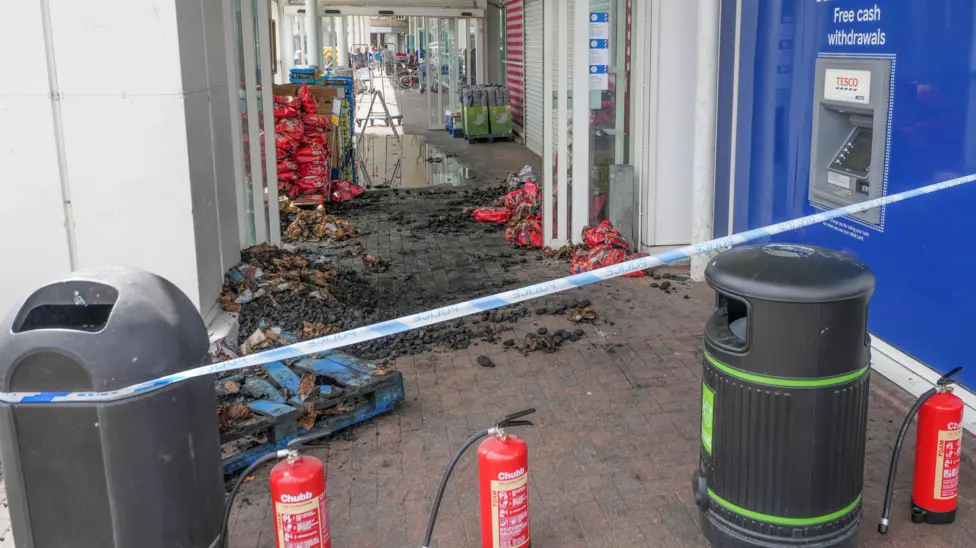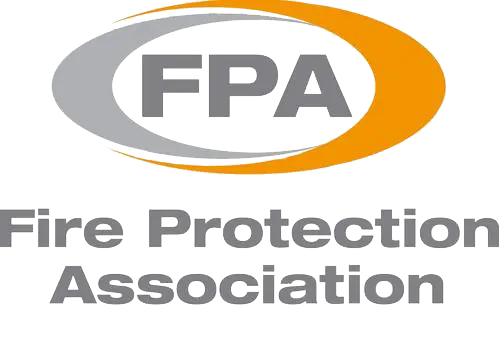On Thursday 24 July 2025, a deliberately set fire at the Tesco superstore on Church Road, Hove brought early-morning chaos and a stark reminder of the importance of proper fire safety management.
Sussex Police have confirmed the blaze is being treated as deliberate, after packets of barbecue charcoal — stacked in the store’s entrance foyer as part of a sales promotion — were set alight at around 04:20am.
Emergency services responded quickly, with three fire engines from East Sussex Fire & Rescue Service attending the scene.
Thankfully, the fire was extinguished without injury, and the store reopened later that day.
But behind the quick resolution lies a bigger issue that could’ve ended much worse — a serious failure in fire safety planning and management.

Combustibles at the Entrance – For a Sales Boost?
The stack of BBQ charcoal had been placed in the main entrance foyer as part of a summer promotion aimed at boosting seasonal sales — a common sight in many retail settings.
But in doing so, Tesco inadvertently created a high-risk arson target and compromised an important escape route.
Charcoal is highly combustible, and storing it in a vulnerable, open-access area like a foyer not only breaches good practice — it likely contravenes the principles of any thorough fire risk assessment.
This wasn’t an accident. It was a management decision with potentially dangerous consequences.

Arson Risk Must Be Part of Every Fire Risk Assessment
Arson is one of the leading causes of commercial fires in the UK.
According to the Fire Protection Association, more than half of serious fires in non-residential buildings are deliberate.
A robust fire risk assessment, conducted under the Regulatory Reform (Fire Safety) Order 2005, would have flagged this placement as an unacceptable risk.
A competent responsible person would have:
- Identified the combustible nature of the stock
- Recognised the foyer as a critical escape route
- Highlighted the vulnerability of the location to deliberate acts
- Advised alternative display arrangements in a safer part of the store
Retailers often promote seasonal goods near entrances for visibility and impulse sales, but commercial strategy should never override safety.
Firefighting Isn’t Free – The Cost of Poor Planning
It took three fire engines and over an hour to tackle the blaze and make the site safe.
While the emergency response was swift and professional, the costs are significant:
- Operational costs to the fire service (often £400–£500 per appliance per hour)
- Lost trading hours and early-morning sales
- Damage to stock and fixtures
- Staff disruption and reactive clean-up
- Reputational damage for the Tesco brand
These are the kinds of avoidable costs that can be prevented with better training, better planning, and common sense.
What This Incident Tells Us
This was a textbook example of why fire safety isn’t just about compliance — it’s about culture.
Had the store’s management or health and safety team applied a basic fire risk lens to the promotion, the charcoal would never have been placed at the entrance.
This was not just a fire — it was a management failure.
Key lessons for all businesses:
✅ Never place combustible materials near entrances or exits
✅ Review fire risk assessments regularly — especially before sales events
✅ Train staff to understand and challenge poor safety decisions
✅ Treat arson as a real, not remote, risk
Final Word
The Tesco fire in Hove could have led to tragedy. Fortunately, thanks to quick action, it didn’t.
But for store owners, retailers, and property managers everywhere, it sends a clear message:
Sales promotions should never compromise safety.
If your team isn’t confident in your fire risk procedures, or if promotional displays are put up without a safety review, it’s time to act.
Because prevention isn’t just good practice — it’s good business.
Need help reviewing your fire safety measures? Speak to our team today and stay ahead of the risks.










